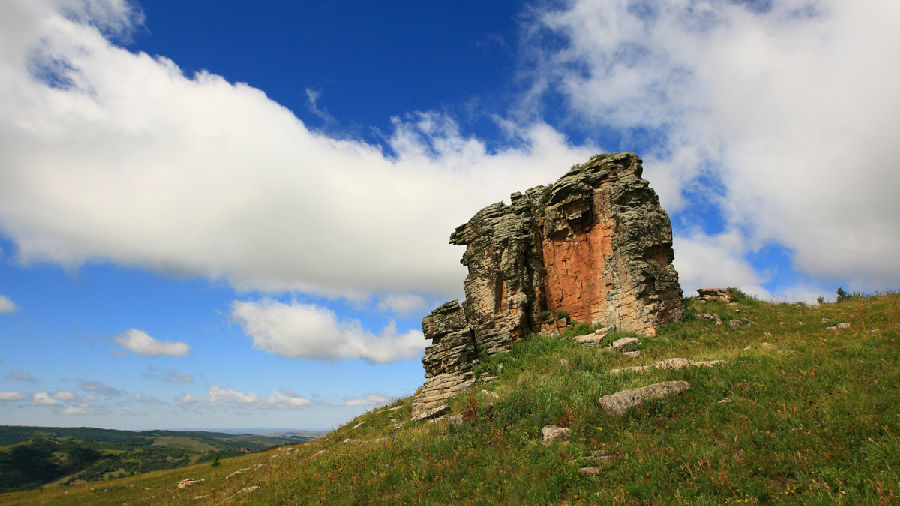Moreover, all this applies only to units of time . Rocks are divided into quite separate units known as systems, series, and stages. A distinction is also made between late and early (referring to time) and upper and lower (referring to layers of rock). It can all get terribly confusing to nonspecialists, but to a geologist these can be matters of passion. "I have seen grown men glow incandescent with rage over this metaphorical millisecond in life's history," the British paleontologist Richard Fortey has written with regard to a long-running twentieth-century dispute over where the boundary lies between the Cambrian and Ordovician.
而且,這一切都只用做時間的單位。巖石的單位還另有一套,叫做系、段和期。而且,還有早、晚(指時間)之分和上、下(指巖層)之別。對于不是專家的人來說,這簡直是一鍋粥;但對于地質(zhì)學家來說,這都可能是會動感情的東西。“我看到大人們?yōu)榱松飞弦缓撩氲膯栴}爭得臉紅脖子粗。”英國的理查德·福蒂在談到20世紀為寒武紀和奧陶紀的分界線而展開的曠日持久的辯論時這樣寫道。

At least today we can bring some sophisticated dating techniques to the table. For most of the nineteenth century geologists could draw on nothing more than the most hopeful guesswork. The frustrating position then was that although they could place the various rocks and fossils in order by age, they had no idea how long any of those ages were. When Buckland speculated on the antiquity of an Ichthyosaurus skeleton he could do no better than suggest that it had lived somewhere between "ten thousand, or more than ten thousand times ten thousand" years earlier.
今天,我們至少可以使用某些先進的技術來確定年代。在19世紀的大部分時間里,地質(zhì)學家們只能依賴于推測。他們可以按照時代來排列各種巖石和化石,但根本不知道這些年代的長短,這是很令人泄氣的。當巴克蘭推測一副魚龍骨骼的古老程度的時候,他只能認為,它生活在大約“10000或10000以上乘以10000”年以前。











